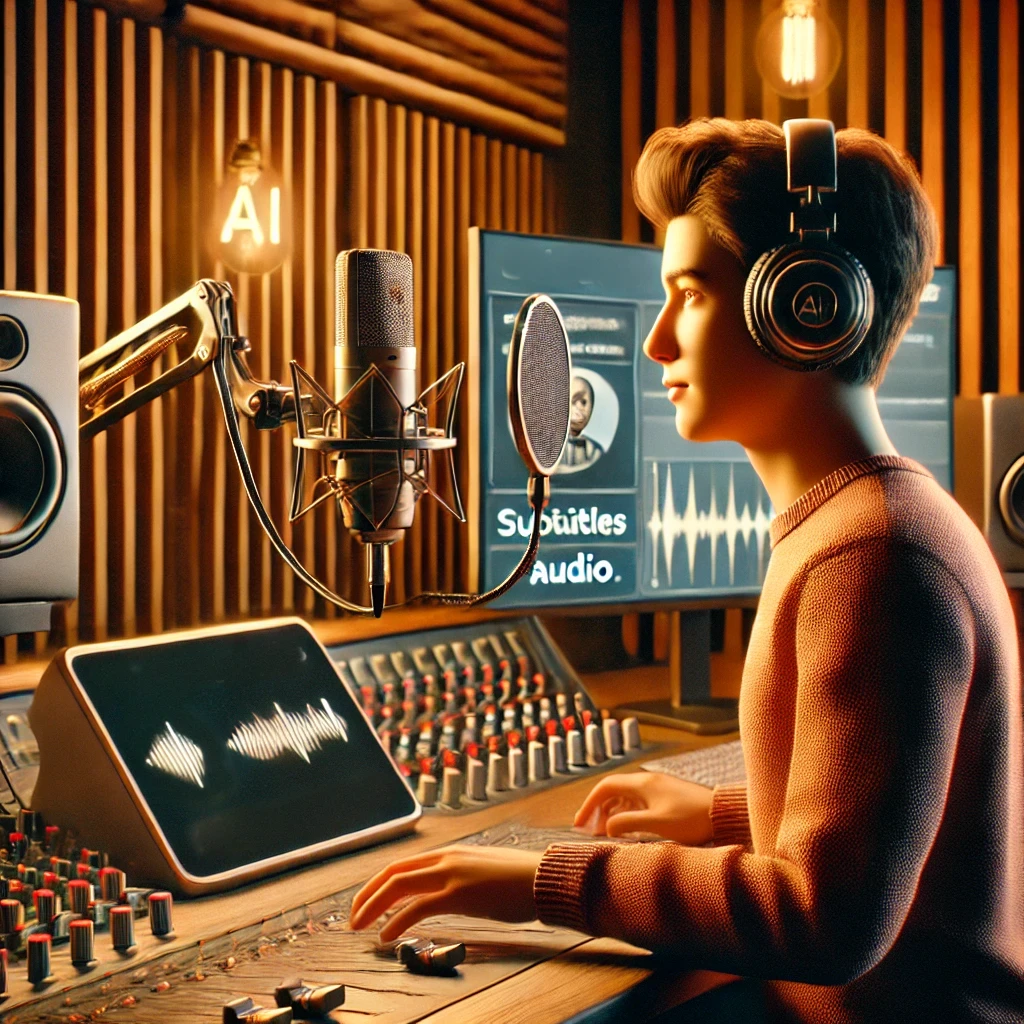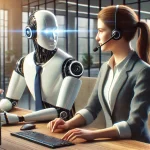Artificial intelligence (AI) is no longer confined to text-based applications like chatbots and document generation. Today, AI is transforming the way we create and consume multimedia content, redefining the landscape of audio and video production. From automated podcast generation to AI-powered dubbing, deepfake technology, and scriptwriting, AI-driven tools are enabling creators, marketers, and filmmakers to push the boundaries of creativity. This article explores how AI is revolutionizing content creation beyond text, the key technologies driving this transformation, and the future of AI-powered multimedia production.
The Rise of AI in Audio Content Creation
AI-powered tools are making significant strides in audio production, allowing creators to generate high-quality podcasts, voiceovers, and music compositions with minimal human intervention.
1. AI-Generated Podcasts and Voiceovers
Traditionally, producing a podcast or a voiceover required hiring professional narrators and sound engineers. However, AI-powered text-to-speech (TTS) models, such as Google’s WaveNet and OpenAI’s Whisper, can now generate lifelike voice recordings that closely mimic human speech. These models use deep learning to analyze speech patterns, tone, and intonation, creating natural-sounding voices.
For businesses and content creators, AI-generated voiceovers reduce production costs and accelerate content delivery. AI-powered platforms like Descript and Resemble AI allow users to create professional-grade voice recordings simply by inputting text. Additionally, AI-assisted editing tools help in refining the audio by removing filler words, enhancing clarity, and ensuring a seamless flow.
2. AI in Music Composition and Sound Design
AI is also reshaping the music industry by assisting in composition and sound design. Tools like AIVA and Amper Music enable musicians and content creators to generate background scores and custom compositions based on specific moods and themes. AI-powered music generators analyze vast datasets of musical patterns and structures to compose original pieces that sound as though they were created by human artists.
For film and game developers, AI-generated sound effects can add depth and realism to audiovisual experiences. By leveraging AI-driven sound synthesis, creators can generate adaptive soundscapes that dynamically adjust to user interactions in gaming and virtual reality (VR) environments.
AI in Video Content Creation
The impact of AI on video production is even more profound, enabling everything from script generation to automated video editing, deepfake technology, and synthetic actors.
1. AI-Generated Scripts and Storyboarding
Scriptwriting is a crucial aspect of video production, and AI is making it more efficient than ever. Language models like GPT-4 are now being used to generate scripts for YouTube videos, advertisements, and even Hollywood movies. AI-powered tools like Jasper and Sudowrite assist writers in brainstorming ideas, structuring dialogue, and enhancing storytelling.
Additionally, AI-assisted storyboarding tools such as Runway and Deep Dream Generator create visual representations of scripts, helping filmmakers and content creators conceptualize scenes before production begins.
2. AI-Powered Video Editing and Automation
Video editing is a time-intensive process, but AI is streamlining it by automating tedious tasks such as cutting, color correction, and effects application. Tools like Adobe Premiere Pro’s AI-driven Sensei and Magisto allow content creators to edit videos with minimal effort. AI algorithms analyze footage, identify key highlights, and suggest optimal editing techniques based on content trends.
Another revolutionary development is AI-driven upscaling, where AI-enhanced software like Topaz Video Enhance AI can improve the quality of low-resolution footage by sharpening details and increasing frame rates.
3. AI-Generated Avatars and Digital Humans
AI is revolutionizing visual storytelling through deepfake technology and AI-generated avatars. Companies like Synthesia and Rephrase.ai allow users to create lifelike digital avatars that can deliver presentations, narrate videos, and interact in real-time. These AI-generated avatars are being widely used in corporate training, social media content, and marketing campaigns.
Deepfake technology, while controversial, has also been used in the film industry to de-age actors, resurrect historical figures, and create realistic special effects. AI-driven facial synthesis can generate hyper-realistic digital characters, making video production more versatile and cost-effective.
4. AI-Powered Dubbing and Lip Syncing
One of the most impressive applications of AI in video production is automated dubbing and lip-syncing. AI-powered platforms like Deepdub and Flawless AI can translate and dub content into multiple languages while ensuring that the lip movements of the actors match the dubbed audio. This technology is revolutionizing global content distribution by making films, educational videos, and corporate training materials more accessible to international audiences.
The Future of AI in Multimedia Content Creation
AI’s role in audio and video production will continue to grow, offering exciting possibilities for creators while raising ethical and creative concerns.
1. Ethical Considerations and Deepfake Risks
As AI-generated content becomes more sophisticated, the risks of misinformation and manipulation also increase. Deepfake technology, for instance, has been misused to create deceptive videos, raising ethical concerns about authenticity and trust. Regulatory frameworks and AI watermarking techniques will be crucial in ensuring the responsible use of AI in multimedia production.
2. AI as a Collaborative Tool
Despite concerns about AI replacing human creators, the most promising future lies in AI-human collaboration. AI is best suited for automating repetitive tasks, enhancing creativity, and optimizing workflows, while human creators bring emotional depth, storytelling intuition, and artistic vision. The integration of AI as an assistive tool rather than a replacement will drive the next wave of innovation in multimedia content creation.
3. Real-Time AI-Generated Content
Advancements in real-time AI-generated content will enable interactive and personalized experiences. Imagine an AI-driven news anchor that delivers personalized news summaries based on viewer preferences or a virtual instructor that adapts video lessons in real-time based on student engagement. These developments will redefine how we consume and interact with digital media.
Conclusion
AI is fundamentally transforming the way audio and video content is created, edited, and consumed. From automated podcast production and AI-assisted video editing to deepfake-driven storytelling and real-time dubbing, AI-powered tools are democratizing content creation and expanding creative possibilities. While challenges such as ethical concerns and deepfake misuse remain, AI’s potential to enhance multimedia storytelling and streamline production workflows is undeniable.
As AI technology continues to evolve, the synergy between human creativity and AI-driven automation will shape the future of content creation, making it more accessible, efficient, and innovative than ever before.



It is sad that many artists are out of work…
Facts is not a single artist got fired!! 😂
automation’s cool but deepfakes . democratization?
tbd 🤷. interesting tho .
Theres alrdy stuff to verify it… 😂
ai doin vid stuff? “democratizing” yeah right 🙄 dunno if its all good tho. maybe overhyped 🤔.
ai makin vids? sounds sus 👎👎
ai makin’ vids & music?! so freakin’ cool! 👍👍👍
ya this is really cool! i create a some music!
ai videos r lit 😃 so easy 2 create
wow ai vids are lit 😎 can’t wait to try it!